Cinematographer Sam Levy on the Absurdist Fun That is Julio Torres’ “Fantasmas”
Julio Torres wrote, directed, and stars in his new HBO series, Fantasmas, a delightfully absurdist comic fantasy loosely predicated on a search for a lost earring. Fantasmas, which means “ghosts” in Spanish, questions reality — Torres and his costars, including Emma Stone and Bernardo Velasco, with cameos by actors like Tilda Swinton, exist in a world that seems to be both multi-dimensional and missing dimensions at the same time, built entirely on frequently three-walled sets that disappear into black.
Julio needs a biopsy for a weird mole on his neck, which hinges on comparing it to the size of a lost earring, setting off a hunt that includes questioning a hamster (who dropped it in a toilet at hamster Berghain, a scaled-down version of the Berlin techno club). As he takes on the banalities of human existence in a fancifully artificial world, cinematographer Sam Levy (Mayday, Lady Bird) plays up the out-of-normal-bounds aesthetic of each scene, whether it’s as theoretically mundane as a doctor’s office or a set for Aidy Bryant hawking toilet dresses (those are dresses, for toilets).
Levy and Torres looked at a wide range of visual references for the series, from the French fashion photography team Pierre et Gilles to Lars von Trier’s Dogville. On set, Torres encouraged a supportive sense of collaboration. “He wanted everyone to have fun figuring out how to make this show,” Levy said. We spoke with the cinematographer about working entirely on studio builds, exploring what ghostliness can mean on screen, and supporting a buoyant, eccentric sense of fun.
The show is a novel mix of reality and fantasy. Was there a specific guiding principle in how you wanted that reflected in the cinematography?
Fantasmas is really Julio Torres’s vision. It’s a very intricately written tale that’s a little bit hard to describe, but it has a lot of surrealistic qualities. We talked a little bit about German Expressionism and films like Metropolis. I would ask him what the most important thing to keep in mind is. He talked about the title and how the story is really a collection of ghostly people in a city. Whatever’s the most ghostly choice, that’s what we should do. It would come up sometimes, usually in the form of wanting an image to have a big flare or an abstract quality, to have an edge, or to look what we might call strange, but was perfectly in line for this story. Getting to shoot Fantasmas was really an exploration in ghostliness and how to get that in the cinematography and the design. We all worked really closely together. Julio described it as making a group art project. The entire thing was shot on a stage, and many of the sets don’t have four walls, so you’re looking into this black void. A lot of it was negotiating this black void.
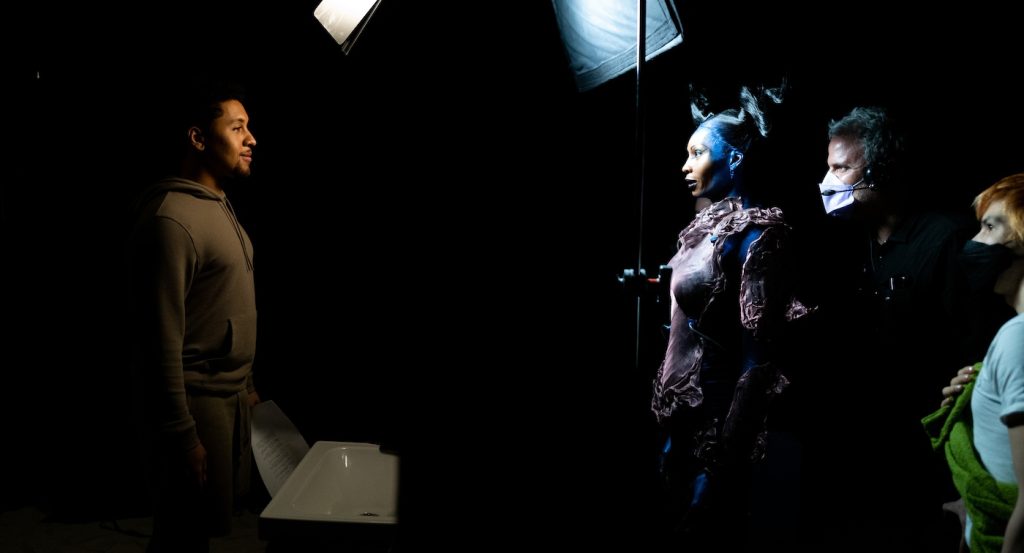
What tools did you use to get a softer focused, vintage look?
We used a modern digital camera and fairly modern lenses. We didn’t use anything that unusual in terms of tools. There was one lens that I own that’s quite old, manufactured in the 1970s, that’s called a Dream Lens. We’d put it on whenever Julio’s character was flashing back or having a poetic moment. Sometimes we’d lean into a heavy amount of diffusion in front of the lens, for the lights to glow in a way that you don’t normally see, or shy away from in more straightforward storytelling. We both wanted to have fun and make certain sequences really beautiful, but were also always thinking, do these characters really exist? Are they ghosts? Are they real?
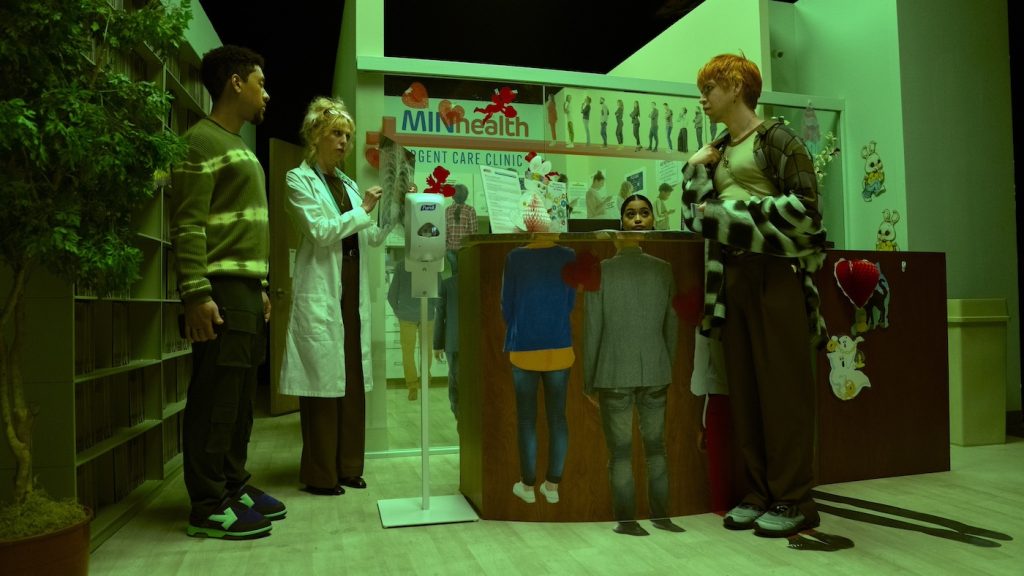
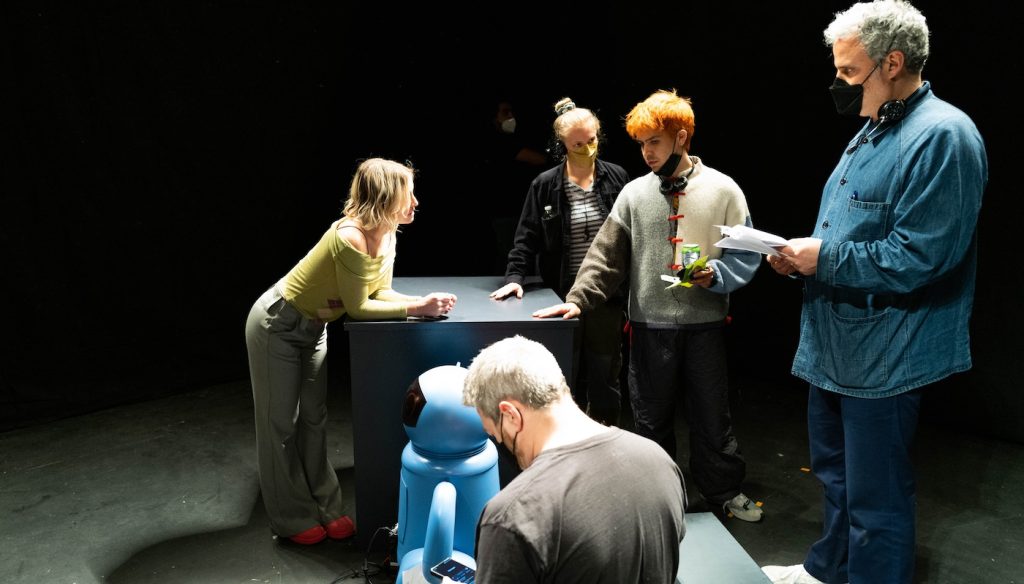
The scenes are also frequently cast in different colors. How did you approach that?
It’s all in camera. We did a lot of rear projection, which is an old Hollywood technique where we would have big screens in back of Julio and the other actors, and we’d use projectors to project onto those screens, as opposed to putting them in front of a green or blue screen and comping in backgrounds later. It’s a technique you see in old Hitchcock movies, for example. Someone is driving a car and you see the road behind them. With our 21st-century eyes, you can tell they’re not really in a car.
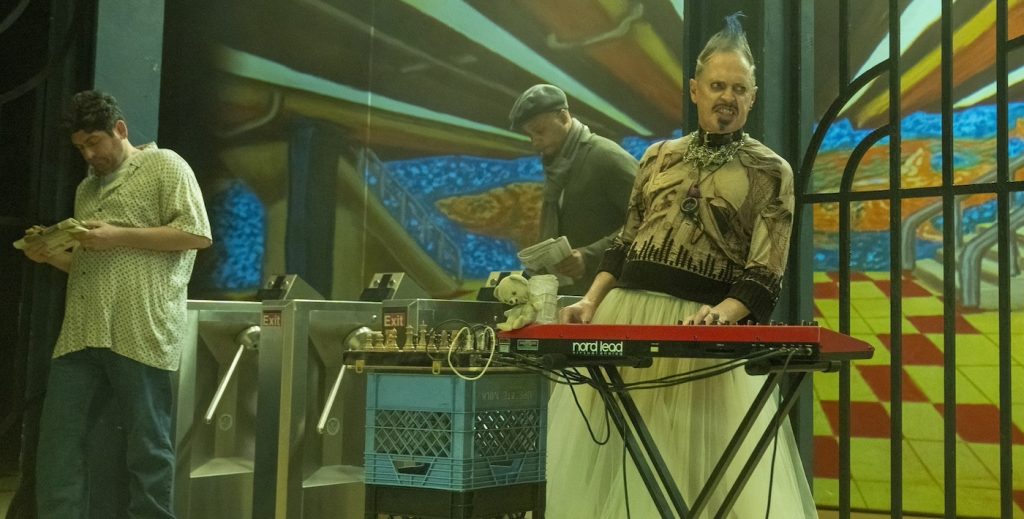
And the sets themselves seemed like they must have been complicated.
The sets are unusual in that they are frequently deconstructed, incomplete, or don’t have four walls. As you saw, there’s a lot of big black voids. Sometimes, a big color punch would help Julio stand out in this very surrealistic set. We looked a lot at Paul Schrader’s film Mishima, as well as Dogville and other films that have deconstructed sets in a theatrical sense. The episodes have to hang together in the right way, the colors have to hang together, the shots have to balance each other out, and at the same time, we have to let go of all that and just have fun because it’s a very fun story and it’s a comedy, at the end of the day. We wanted to take it seriously but not take ourselves too seriously.
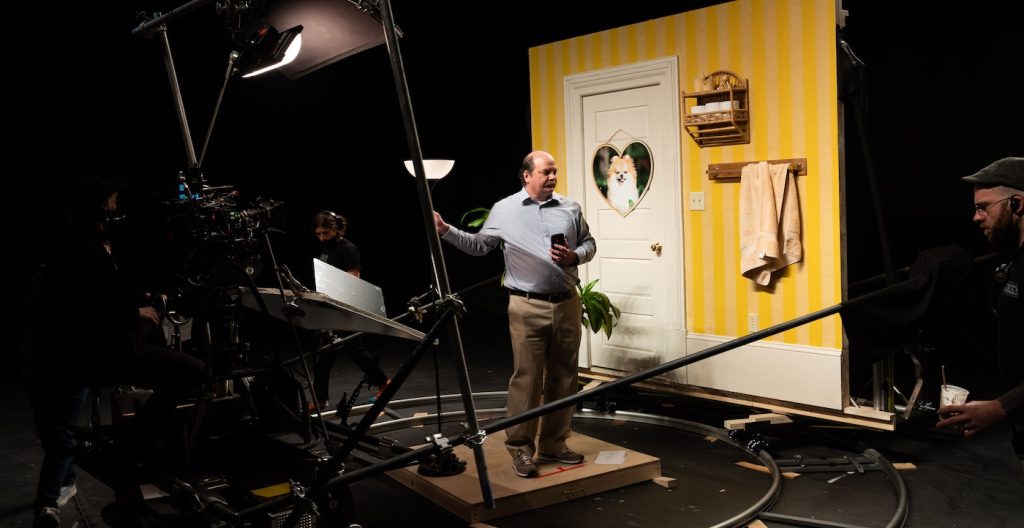
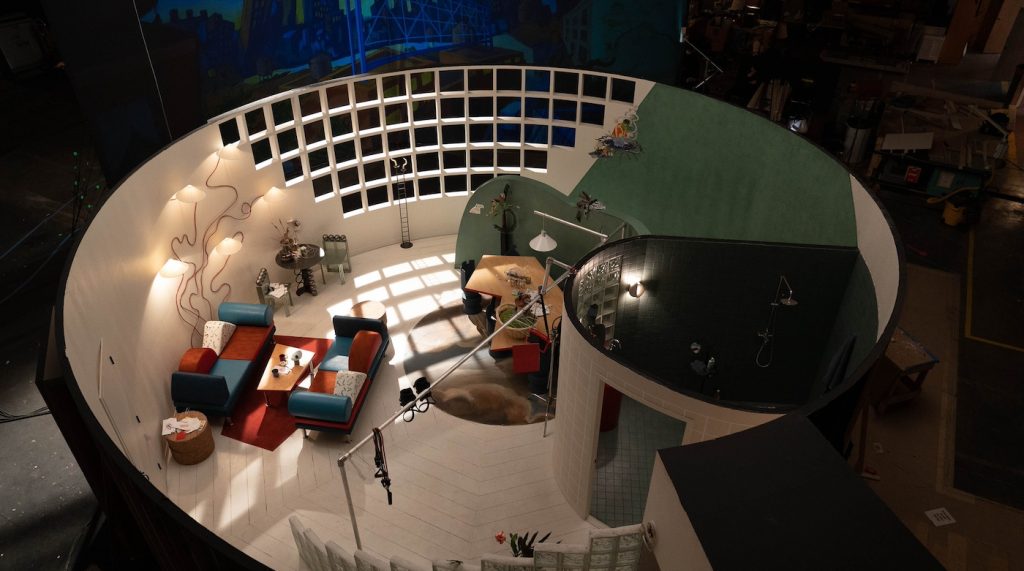
Speaking of comedy, did you really shoot Berghain for hamsters?
That was one of my favorite things when I was initially sent the script. We actually filmed hamsters. Tommaso [Ortino, the production designer] built an actual club where we put hamsters inside. My job was to figure out, okay, we want really intricate shots of hamsters inside this club. We couldn’t fit our camera in this tiny set, so we used my still camera, which is very small, and built this little rig so I could hold it upside down and follow these hamsters around. My wonderful gaffer, Jason Velez, and I went to Canal Street separately to find lights that would work in a little club. We laughed a lot that day.
And on the topic of downtown Manhattan, Fantasmas feels very representative of New York’s creative side.
Julio and I looked at a lot of photos and old videos of the experimental group The Wooster Group’s shows. They’ve been making deconstructed sets for decades. The fun thing about working with Julio is he’s very tapped into those things, as are many of his friends on the show. Martine [Gutierrez], who plays his manager, is a brilliant artist. A lot of these people are comedy performers in some form or other and have a very experimental artist bent to their performances. It was very fun to get to be a part of that. We shot this on a stage near Jersey City and created our artistic bubble in a very industrial area just outside the city.
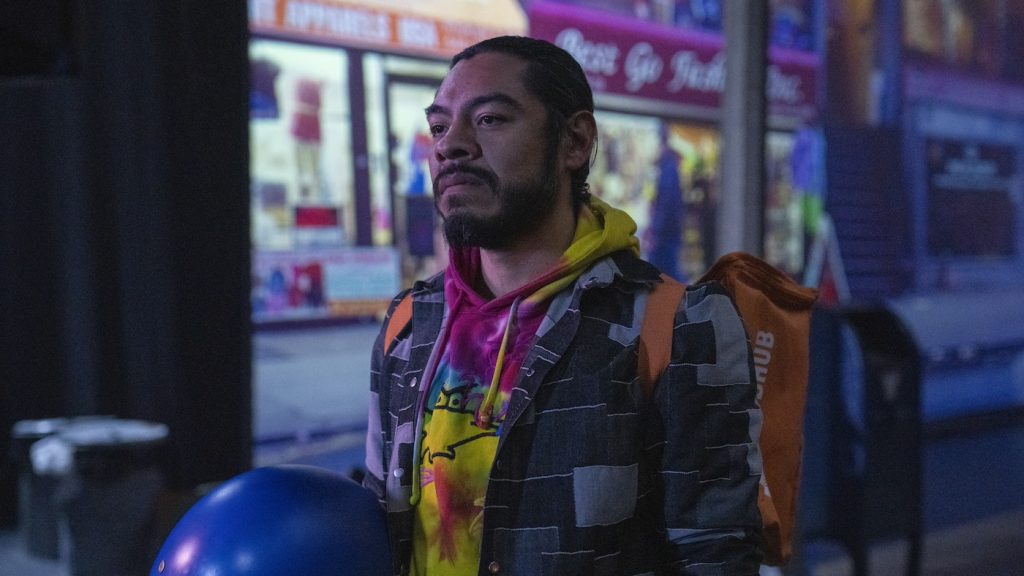
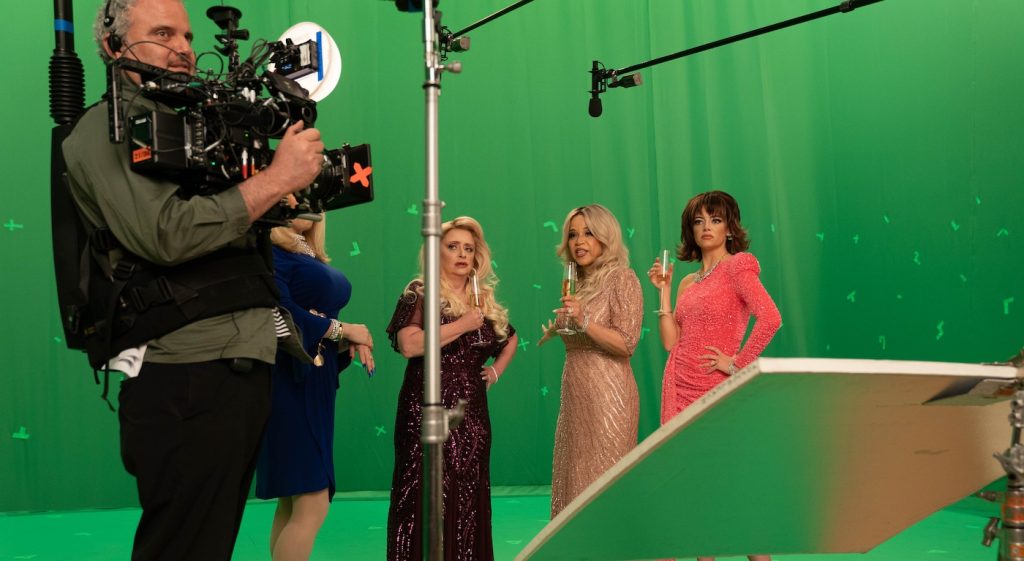
What was shooting in the bubble like?
One thing that was great was that I’d never gotten to work on something like this that was completely designed, constructed, and controlled. There’s a lot of controlled lighting. Sometimes, we work on movies where you shoot in a house or apartment with a window, so you have this available light. We didn’t have any of that here. We had to build everything. That was exciting to get to do that. And also, I’d never worked on something where the show’s star was also the director. That was a new experience for me and a really great one, doing that with Julio. Just watching him create this world and help in my way to bring it to life was really vibrant and exciting.
For more on Warner Bros., Max, and more, check out these stories:
“Horizon” Costume Designer Lisa Lovaas on Dressing Kevin Costner’s Epic Western
“Green Lantern” Series a Go at HBO as DC Studios Locks in First Live-Action Show
“House of the Dragon” Cast & Crew Discuss That Brutal Funeral in Episode 2
Featured image: Sam Levy and Julio Torres on the set of “Fantasmas.” Courtesy HBO



